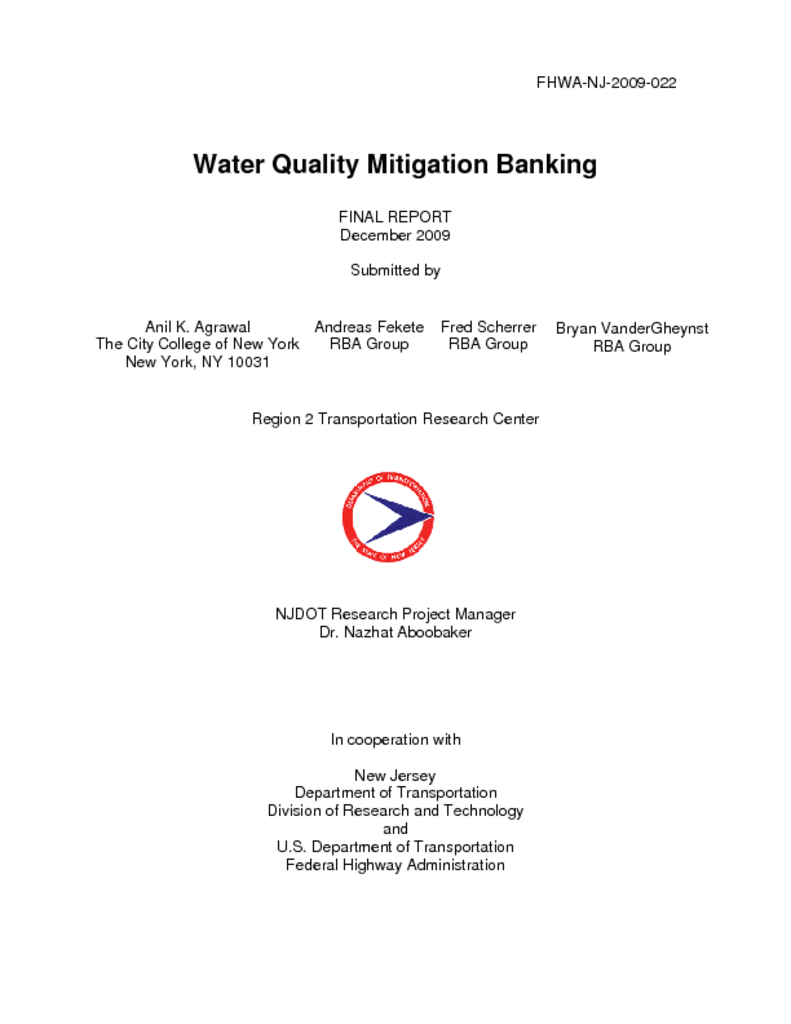<p>Current practice in New Jersey for mitigating stormwater impacts caused by transportation infrastructure projects is established by NJDEP Stormwater Regulations (N.J.A.C. 7:8). These rules outline specific processes to offset impacts to water quality, groundwater recharge and peak rate of runoff/runoff volume resulting from the addition of impervious surfaces. The rules are written to address impacts of individual projects without specific provisions for addressing cumulative programmatic impacts of multiple projects through 'mitigation banking'. The requirement to design and build separate, 'on site' mitigation features for each project results in delayed implementation schedules, inefficient and nominally effective results and excessive maintenance demand. Over two decades ago, with reference to wetland resources, the need to achieve greater efficiency and environmental and economic benefits of scale led to the creation of wetland banking, which serves as a useful model for establishing a Stormwater Banking Program in the State of New Jersey. This report describes outcomes of a comprehensive study on the feasibility of water quality banking in the State of New Jersey. Groundwater recharge can be included within the banking system; however peak flow control banking is less likely feasible due to the potential for increased flooding of private properties. A detailed survey of future New Jersey Department of Transportation (NJDOT) projects was carried out to assess mitigation needs and to identify a pilot watershed for water quality mitigation banking. The Hackensack River HUC-11 watershed was selected for this purpose. Due to its highly developed context, 'on site' project mitigation will likely cause significant hardship and delay future projects. By identifying a feasible 'off site' location for water quality treatment, it was shown that an initial bank can be established to meet future needs within the watershed. A framework for tracking mitigation credits using a web-based computer program was also developed for successfully implementing water quality mitigation banking. The approach will provide future opportunities for adding credits to the bank by removing unnecessary impervious surfaces on projects and 'over-treatment' at available 'on site' BMPs.</p>




